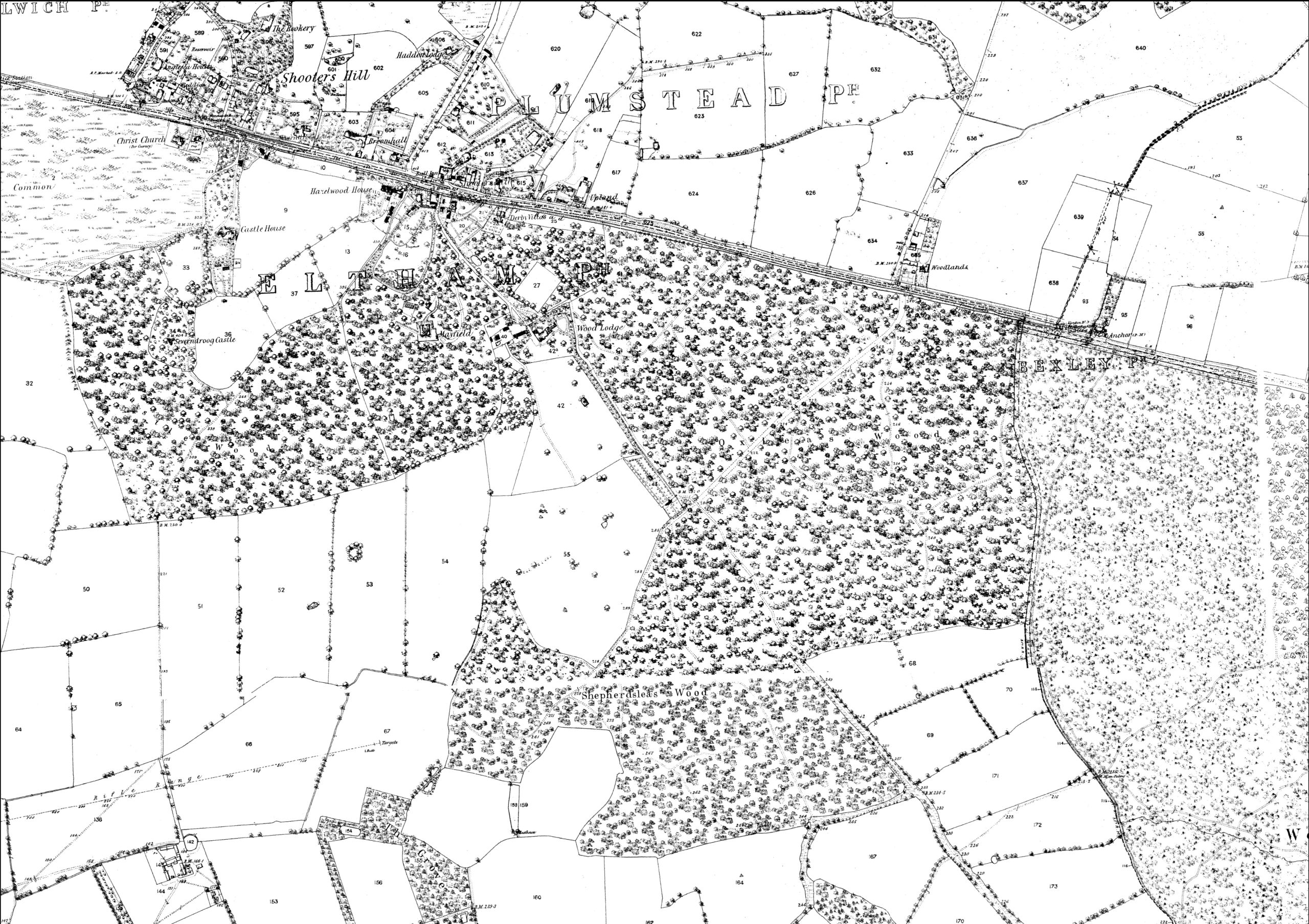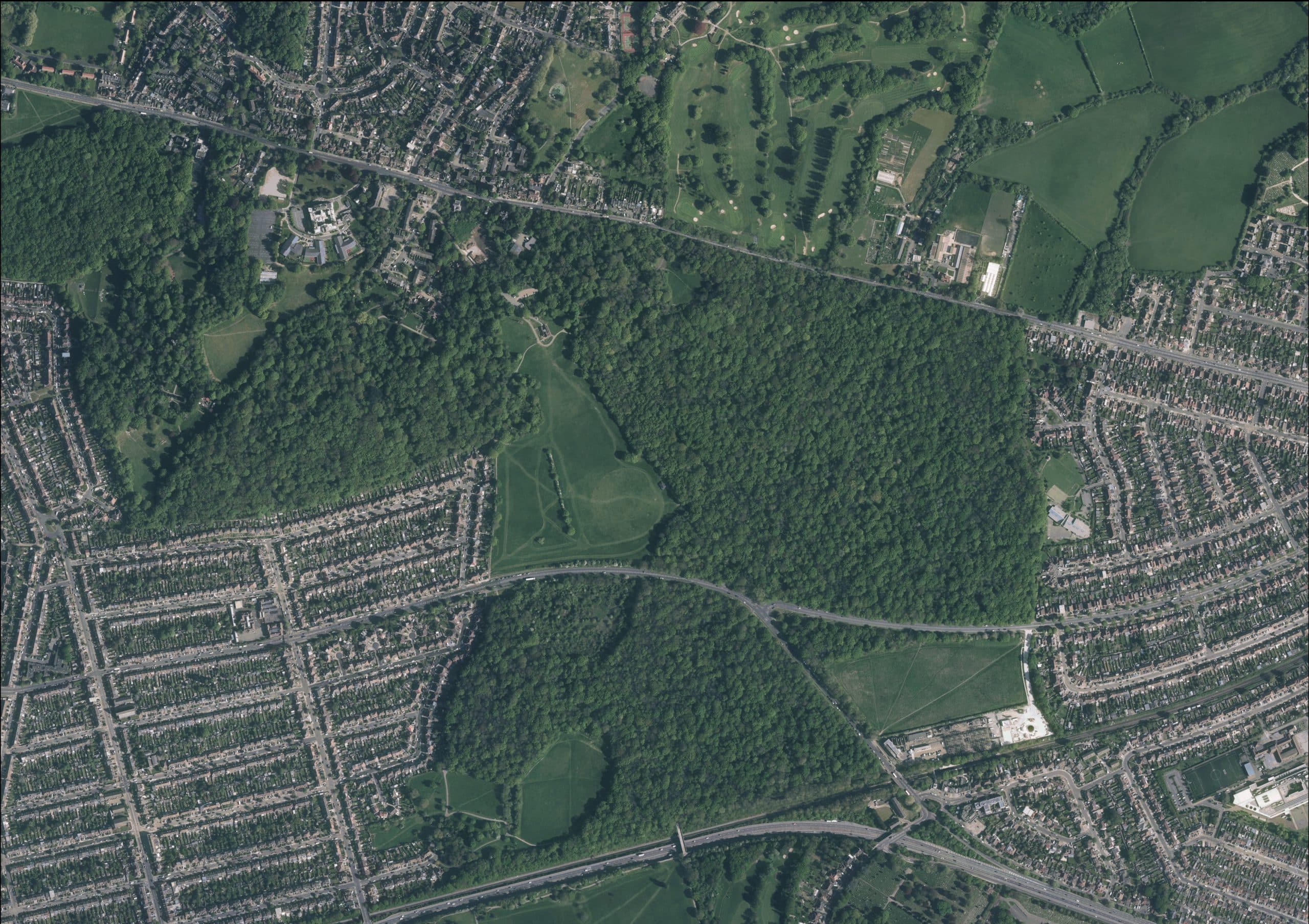Over the last 18 months GiGL have been mapping all ancient woodland in Greater London. This work will update Natural England’s Ancient Woodland Inventory (AWI), allowing us to address errors and omissions in the current dataset, and will help us to ensure that all ancient woodland sites are recognised and can receive the management and protection they deserve. More information on the AWI Update project and its importance can be found on our website. In this article we will hear from Frankie, GiGL’s AWI Officer, and the volunteers who have kindly offered up their free time to assist with the project.
Since September 2022, I have been lucky enough to have the support of five lovely volunteers: Jeremy, Pamela, Richard, Stacie and Stephen. The time and effort they have devoted to the project will help GiGL ensure that we have as wide and robust an evidence base as possible when assessing a potential ancient woodland site’s status. Collectively volunteering over 400 hours across a range of varied tasks, from processing historic maps so they can be viewed on a digital map (also called georeferencing) to gathering evidence of a site’s history, they have shown an enthusiasm and an openness to learning that has made this component of the project very rewarding both in terms of help towards the project and also personally. You can see an example of a map that they will have used to interpret a site’s history below.
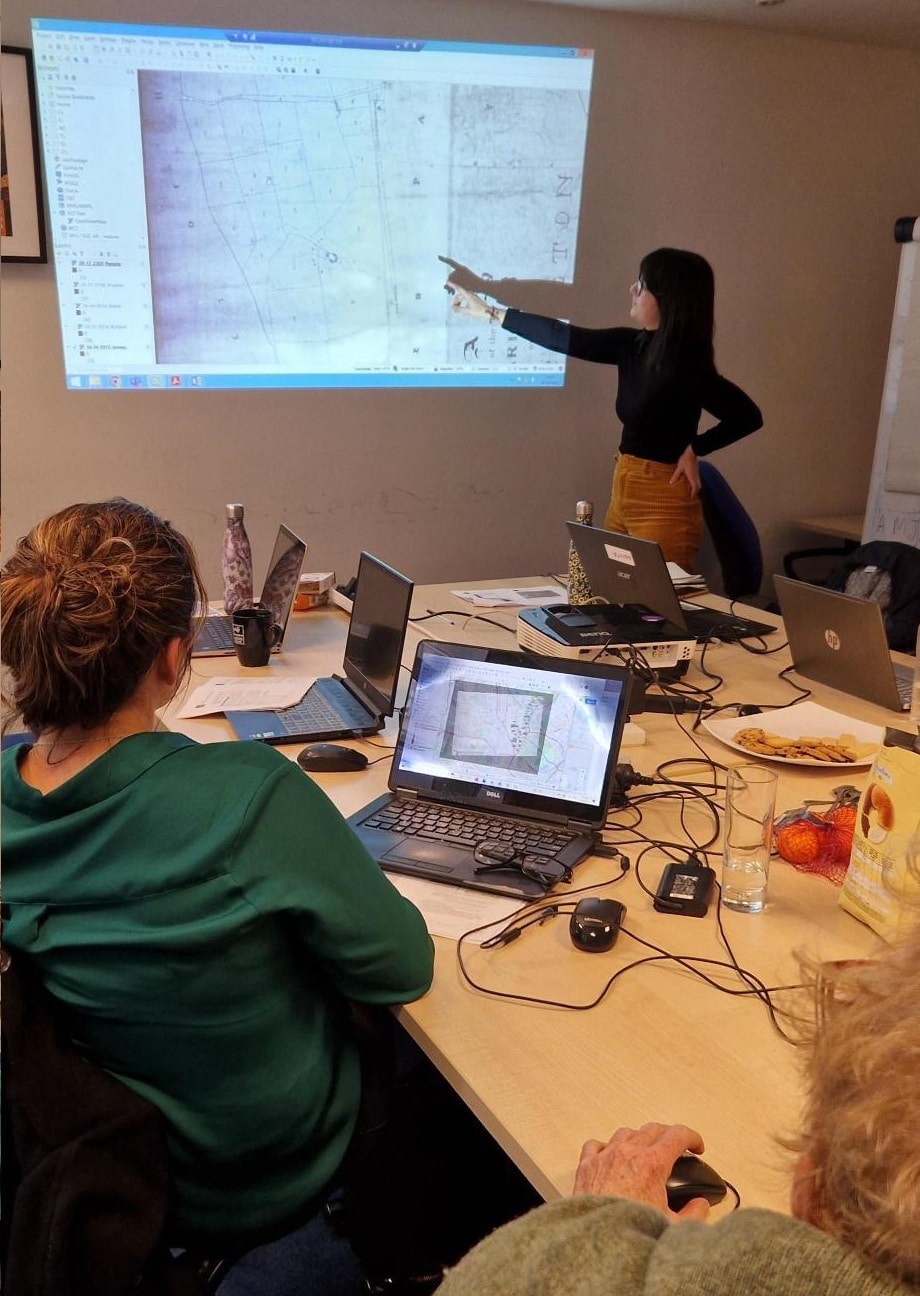
GiGL aims to make sure that every volunteer benefits from supporting our work. For the AWI Update project, volunteers completed two in person half-day GIS (geographic information system) training sessions. GIS systems allow you to create, analyze and map data. One of the training sessions was a more general introduction to QGIS (an open-source GIS application) and another was specifically on how to georeference digitised historic maps so that they can be viewed in GIS. There have also been ad-hoc opportunities for learning about ancient woodland and what work at a Local Environmental Record Centre is like. GiGL is continuing to develop its volunteering opportunities so do regularly check our website if you feel inspired to volunteer yourself.
(photo: GIS georeferencing training session run by GiGL AWI Officer Frankie)
Though coming from different backgrounds and skillsets, our volunteers have been united by a love of the environment, especially I hope now of London’s woodlands, and a desire to contribute towards conserving it. Below I have asked them to talk a bit about themselves and their work helping to update the AWI. I hope you enjoy getting to know them as much as I have.
Lastly, I just wanted to say a big thank you to the AWI Update volunteers, I can confidently say that this project wouldn’t be where it is today without you!
Jeremy
Stephen
Stacie
Pamela
Richard
Jeremy
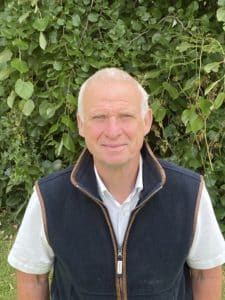
At the beginning of my involvement with the AWI team I was assigned a number of local London Boroughs and, having some familiarity with Kingston-upon-Thames, I leapt at the opportunity to search the archives of this Borough’s history centre. The visit prepared me for the breadth of the project and opened my eyes to Rocque’s 18th century map and detailed reports on historic land use, Sites of Importance for Nature Conservation and more.
In parallel the AWI team provided valuable GIS training that brought my elementary knowledge of QGIS up to speed and introduced me to georeferencing, a task that has formed a major activity for the past few months. At the last count I have manipulated about 60 tithe maps. Although the task has almost exclusively been desk-based I have gained an unexpected knowledge of boroughs and their woodlands that, in one particular case, I would simply have driven by to visit IKEA! In addition, along the way there have also been curious discoveries e.g. Beulah Spa Gardens and the Surrey Iron Railway to name but two.
Throughout this period Frankie has found time from her busy schedule to keep the group fully informed of our various tasks and has been readily contactable via MS Teams, on the phone or in person; to my mind a vital aspect of virtual team management.
Now it is time to visit on foot the woodlands I’ve so far ‘viewed’ only from my desk to appreciate their ancient character.
Pamela
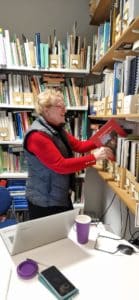
I am an enthusiastic gardener and have planted a native hedgerow along my back fence. It is seven years old now and starting to look like a hedge. Hopefully it will produce some sloes this year for sloe gin! It already provides rosehips, elderberries and haws for the birds. The garden also has a pond, plenty of untidy spaces and plants for pollinators to be as wildlife friendly as possible.
I got involved in GiGL’s Ancient Woodland Inventory project because it feels like a really useful project to be part of. I have been introduced to online mapping techniques for the first time which has been a challenge for me but also very interesting, and the volunteers have been given access to a wide variety of resources and support to help with each task. As an ex-librarian, I have especially enjoyed being made aware of all the sources of habitat and site information that are out there. Looking back at historic records borough by borough and piecing together site histories has been fascinating.
Richard
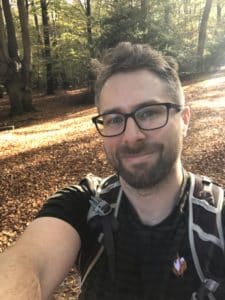
I wanted to volunteer with GiGL to make use of some of the skills I had gained during my conservation masters, both to help out a valuable project that can help identify and protect ancient woodlands, and also to gain experiences that would stand me in good stead when looking for work in the conservation sector.
I have enjoyed the QGIS training and the detective work of searching through old maps. This was most enjoyable when finally moving on to work on the test site for the site history research, which I did for Scratchwood in Barnet. It was great to combine grey literature searches with analysis of historical maps to create a picture of how an area of ancient woodland has changed over time.
While visiting ancient woodland sites near Stanmore Country Park and photographing information boards I discovered that there is a little RAF museum hidden near to an ancient woodland site, from where WW2 fighter command was based and where they now serve excellent tea and cake!
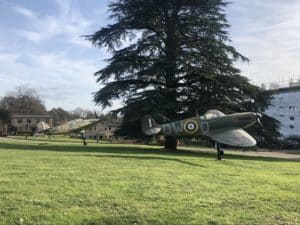
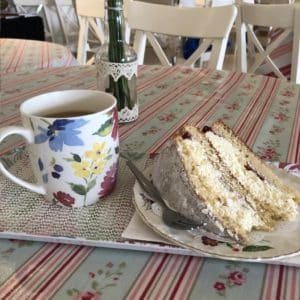
Stanmore Country Park with its RAF museum and excellent tea and cake (photo by Richard)
Stacie
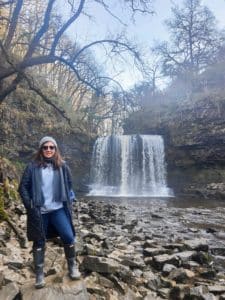
I was eager to volunteer with GiGL on the AWI Update project as I believe it will create an invaluable reference that will help protect London’s irreplaceable ancient woodlands and their rare and threatened species. In addition, it will help ensure future generations can benefit from the recreational and health benefits that natural environments offer.
While balancing parenting, studying, and volunteering offers a challenge, I have really enjoyed being part of the AWI team and delving into the history of woodlands within my assigned boroughs. Volunteering with GiGL has given me numerous opportunities to develop my research skills and I have particularly enjoyed working with QGIS and applying the skills learned in a practical setting.
While working on the project, it has been fascinating comparing old maps and observing London’s remarkable transformation over the centuries. I have enjoyed learning about the history of the Great North Wood, which once inhabited a large portion of south London, and potentially discovering remnants of this ancient woodland nestled within highly developed areas. During spring, I hope to explore more of these woodlands in person and catch sight of the ancient woodland indicator species mentioned during research.
Photo caption: Stacie in the Bannau Brycheiniog (Brecon Beacons) National Park (photo by Brooke Kennerson)
Stephen
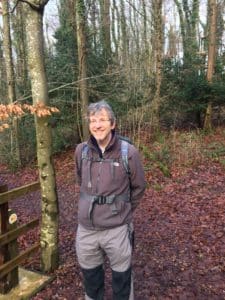
All my jobs were interesting, but none had a direct connection with the natural world. In 2019 I decided to take a career break and just as I was planning to return to permanent employment the Covid-19 pandemic hit. I took the chance to review how I spend my time, and was excited to see an advertisement for volunteers to help with the update to the AWI. I liked the fact that I could do most of the research work from my home office, that it required a systematic approach and thorough record-keeping, and that it involved trees, perhaps the most under-appreciated part of our natural environment.
I started volunteering on the AWI in October 2022, and I have already learned so much from being involved, from using the technology for mapping (‘GIS’), to ecological definitions of woodland types, and much more about the boroughs closest to where I live. For example, I knew that Hounslow Heath, still today an impressively large and untamed environment, in the eighteenth century was much bigger, encompassing the areas now occupied by Heathrow Airport, Feltham, Hampton and Twickenham. I discovered that one of the most significant steps towards the whole of the UK being mapped by the Ordnance Survey took place on Hounslow Heath. In 1784 General William Roy made an incredibly accurate measurement of a five-mile baseline, levelling the ground and inventing new measuring tools, to provide the basis of a triangulation. The southern end in Hampton Hill is marked by an upturned cannon and the road is named Roy Grove in his honour. The Epoch 1 Ordnance Survey maps and drawings continue to be a valuable reference for me and other researchers on the AWI project today.
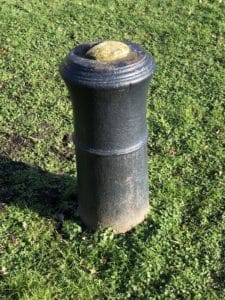
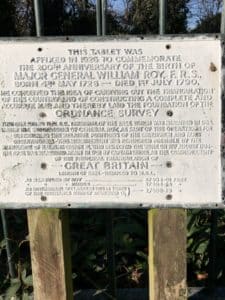
Memorials to William Roy at Hampton (formerly Hounslow Heath) (photo credit Stephen)

